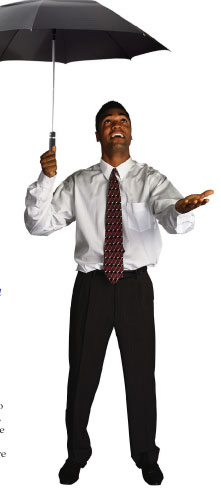|
 The “Engine of U.S. Jobs” – Employing 60 Million Americans – Faces Major Challenges and Need for Increased Resilience; Report Examines Case Studies in Following Sectors: Retail, Tourism, Landscape Architecture, Agriculture, Roofing, and Small-Scale Manufacturing. The “Engine of U.S. Jobs” – Employing 60 Million Americans – Faces Major Challenges and Need for Increased Resilience; Report Examines Case Studies in Following Sectors: Retail, Tourism, Landscape Architecture, Agriculture, Roofing, and Small-Scale Manufacturing.
U.S. small businesses – widely recognized as the backbone of the U.S. economy – are particularly at risk from extreme weather and climate change and must take steps to adapt, according to a new report from Small Business Majority (SBM) and the American Sustainable Business Council (ASBC).
Titled “Climate Change Preparedness and the Small Business Sector,” the report concludes: “Because small businesses are distinctly critical to the U.S. economy, and at the same time uniquely vulnerable to damage from extreme weather events, collective actions by the small business community could have an enormous impact on insulating the U.S. economy from climate risk.”

Featuring case studies from the retail, tourism, landscape architecture, agriculture, roofing and small-scale manufacturing sectors of the U.S. economy, the Small Business Majority/ASBC report finds:
• Lacking access to the capital and resources of large corporations, small businesses can suffer lasting economic damage as a result of a single extreme weather event. For example, of the 60,000 to 100,000 small businesses negatively affected by Hurricane Sandy, up to 30 percent are estimated to have failed as a direct result of the storm.
• An estimated 25 percent of small to mid-sized businesses do not reopen following a major disaster.
• The median cost of downtime from a small business affected by an extreme weather event is $3,000 per day. Small businesses’ physical assets tend to be more concentrated: A single building or factory could represent most of the book value of a small business, whereas large businesses benefit from greater geographic diversification.
• The majority of small businesses have not closely analyzed the potential economic losses from extreme weather events or other climate-related risks, in part due to a lack of resources to do so. In fact, 57 percent of small businesses have no disaster recovery plan, and for those small businesses that do have continuity, or risk management plans, 90 percent spend less than one day a month preparing and maintaining them.
According to NOAA, 2011 and 2012 were the two most extreme years on record for destructive weather events, which caused a total of more than $170 billion in damages, much of that to businesses.
Small businesses employ approximately 60 million Americans, or nearly half of the entire U.S. workforce.
More and more entrepreneurs are seeing real-life impacts to their businesses and their bottom lines from climate change and the extreme weather events it creates, and they want something done to help curb those effects. They also see huge opportunities in the renewable energy arena that will help boost their bottom lines, and believe government can create financial incentives that can help them take energy efficiency measures to save money and create market opportunities for small firms.
Extreme weather events associated with climate change pose a variety of direct and indirect risks to small businesses that vary by geographic region, proximity to coastlines, and the nature of the business affected. Directly destructive events include hurricanes, tornadoes, droughts, wildfires, floods, storm surge, and ice storms, as well as extremes of heat and cold. Indirect risks of extreme weather can include power outages, lack of access to water, increased demand for heat or air conditioning, rising insurance costs, supply chain disruptions, lack of access to natural resources, and loss of work hours.
Other key report findings include the following:
• Small businesses must recognize both their vulnerability to these changing climate conditions and their role as critical participants in national climate preparedness. According to a June 2013 poll by Small Business Majority, one-third of small business owners report they have been personally affected by extreme weather, and 57 percent believe extreme weather events are an urgent problem.
• The majority of small businesses operate out of a single physical location. According to the U.S. Small Business Administration, up to 90 percent of small businesses get the majority of their business from within two miles of their front doors. This makes small businesses more vulnerable to loss compared to larger companies that have backup resources at alternate facilities or branch locations. As a result, small businesses will be more heavily impacted by technological or telecommunications failures, the absence of employees, power failures, supply chain interruptions, and rising insurance costs. Direct damage from extreme weather events such as flooding, sea level rise, storm surge, and drought will impact small businesses more severely than a larger business with more financial and human capital.
The American Sustainable Business Council and its member organizations represent more than 165,000 businesses nationwide, and more than 300,000 entrepreneurs, executives, managers, and investors. http://www.asbcouncil.org.
Small Business Majority is a national small business advocacy organization, founded and run by small business owners, to support America’s 28 million small businesses. http://www.smallbusinessmajority.org.

|